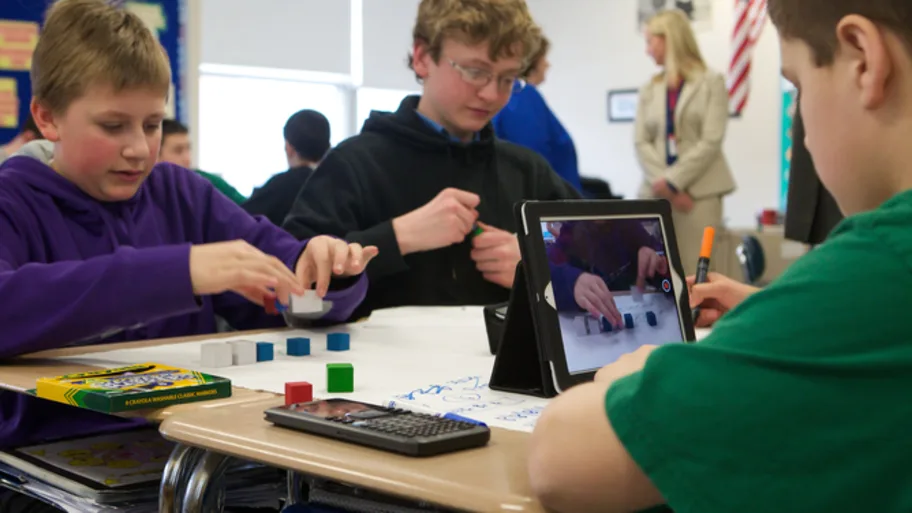
Photo courtesy of US Department of Education, CC BY

Image by Shutterstock
Learning more about the factors that affect women from diverse backgrounds progressing in STEM fields can be used to increase female progression.
— By Conn Hastings
Researchers at the University of Wisconsin-Madison have developed recommendations to improve female progression in science, technology, engineering and mathematics (STEM) courses. Their study surveyed women in two-year courses, and found that self-belief in their abilities in mathematics and science and their interaction with others about transferring to four-year STEM courses are important factors in their intention to transfer. However, other factors such as racial/ethnic background, marital status, and childcare obligations are influential.
On International Women’s Day, it’s important to take stock of the fact that women are still seriously under-represented in STEM professions, which are currently and historically male dominated. “STEM programs at postsecondary institutions of all levels produce a significantly higher number of male graduates than females,” explains Xueli Wang, lead author on the study recently published in Frontiers in Psychology.
Meanwhile, the demand for graduates in STEM fields is increasing. Closing the STEM gender gap is an important step towards addressing the shortage in qualified STEM workers while providing some much-needed gender balance.
Two-year technical and community colleges tend to have higher numbers of female students, who come from diverse backgrounds. Such colleges represent a pathway for women to enter STEM programs. Understanding the factors that affect women’s intentions to transfer to four-year courses could help policy-makers and educators to better support women to transfer.
With this goal, the researchers analyzed 696 female students starting STEM courses at two-year colleges. Using survey results and administrative records, the team recorded each student’s intention to transfer to a four-year STEM course and examined the influencing factors.
“We found that in general, women with stronger math and science self-efficacy beliefs (that is, how confident women feel about their abilities to perform well in math and science) tend to develop a strong intent to transfer in STEM fields,” says Wang. “Also, if women engage frequently in activities such as communicating with their advisors about transfer or seeking information about transfer, they are also more inclined to demonstrate intent to transfer in STEM.”
However, the women’s marital status, racial/ethnic backgrounds, and childcare obligations also affected their intent to transfer. For example, Black women were less likely to express an intent to transfer compared with White women, unless they were involved in many interactions with others about transferring. Hispanic women were more likely to transfer than White women, even if they had less interaction with others about transferring.
Surprisingly, for married women, interacting more with others boosted their intent to transfer into non-STEM fields, while single-parent mothers were more likely to want to transfer into STEM fields under the same circumstances. Interestingly, for women who are first-generation college students, increased self-belief in math abilities was not as influential in their choice to transfer, compared with the other women surveyed.
The results demonstrate female students’ competing demands and priorities, diverse backgrounds and personal circumstances. So how can these findings be applied to increase the number of women who progress in STEM fields? An obvious point is that increasing women’s self-belief in their math and science abilities and facilitating transfer-oriented interactions should pay dividends in more women transferring.
“Instructors are core to facilitating their female students’ self-efficacy, so they must create classroom spaces that are more welcoming to female students,” says Brett Ranon Nachman, one of the study’s co-authors. “Pairing students with female mentors in the field may provide encouragement and support, and sustain these students’ passion and persistence in STEM.”
The results also suggest that support should be tailored for student diversity and personal circumstances. For example, transfer-oriented interaction appears to be critically important for Black women, but not Hispanic women, in their decision to transfer.
This research is part of an important Frontiers Research Topic which aimed to elucidate on women’s under-representation in Engineering and Computing.
REPUBLISHING GUIDELINES: At Frontiers, open-access and sharing research is part of our mission. Unless otherwise noted, you can republish our articles posted in the Frontiers blog – as long as you credit us with a link back. Editing the articles or selling them is not allowed.
March 08, 2017
Editor
Get the latest research updates, subscribe to our newsletter